Why Does My Sheltie Smile?
Is the Sheltie smile real? Dog experts say yes, but it's not for the reason we think. Take a look at the evolutionary roots in wolf behavior and dog psychology that causes your Sheltie to beam at you.
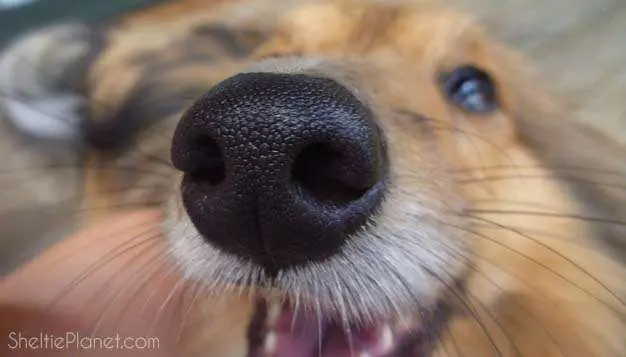
The Sheltie smile is an endearing trait and it's not unique to Shetland Sheepdogs. But what's going on when they appear to smile? Are our dogs actually happy or are we just anthropomorphizing them?
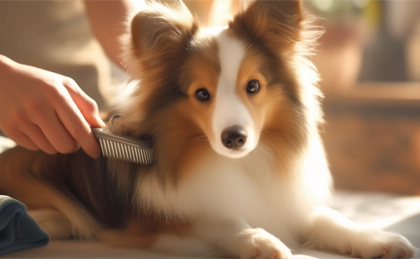
How to Groom a Sheltie
The double coat of a Sheltie needs frequent grooming. Here's my guide to systematically de-shedding the undercoat and untangling mats.

The Sheltie Coat Colors
A showcase of the standard Sheltie colors (Pure Sable, Mahogany Sable, Tri Color, Blue Merle, Bi Black, and Bi Blue) and the color genes that make them.
What The Experts Say
Can dogs really smile? The experts say yes, but not for the reason we imagine. Wolves smile to indicate submission to another wolf. Equally, dogs instinctively interpret this grin as a sign of submission. It tells them that this particular dog isn't a threat.

Confident, alpha dogs rarely smile. They have no desire to show their submission to anyone. And since Shelties are usually gentle, submissive dogs, you're more likely to see them submit with a Sheltie smile. If you think about it, the social smile is what we humans often do too!
An exception is when dogs "laugh" with their upper teeth bared. This is not at all submissive, but is a sign of aggression. If you see a dog making this face (including dear sweet Shelties) then back off quickly.
And sometimes your Sheltie can appear to smile when he's panting, as you can see here when Howard was a puppy. We were having a great game of chase the glove when we paused for a breather and he did this!
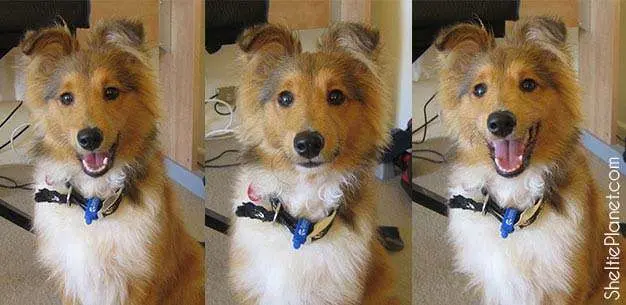
When The Sheltie Smile Becomes Real
If you think the Shetland Sheepdog smile has just lost its magic... think again. Because experts also concede that eventually a dog's smile can actually become genuine over time, thanks to the psychological effect of classical conditioning.
Remember the famous experiment known as Pavlov's Dogs? Ivan Pavlov, the Russian psychologist, repeatedly rang a bell before giving dogs their dinner. Soon, the dogs began salivating when they heard the bell but there was no food present.
Like Pavlov's Dogs, to reinforce the Sheltie smile, you need to repeatedly reward the behavior: a belly rub, a dog treat, or a nice pat on the head. In this way, we're conditioning our dog's laugh by rewarding this cute behavior every time we see it. This is also the basis of clicker training.
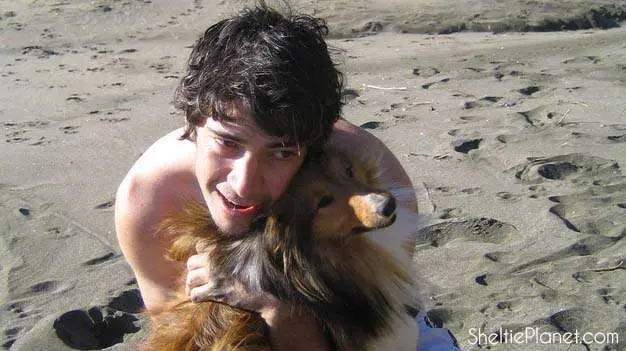
Gently conditioning this kind of submissive behavior in your dog is a good thing. It's his instinct to follow the leader—and you create a happier lifestyle all round when you're able to ensure your dog is well-behaved. So next time you see your Sheltie smile, give him a reward. Everyone wins.
Up Next

20 Things a Puppy Needs
You're getting a new puppy! Praise Wibblesniff! This puppy checklist details all the essential stuff you need before you bring home your new best friend.
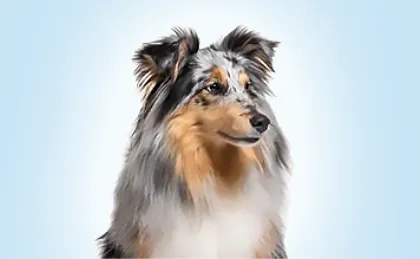
Blue Merle Shelties
Did you know that Blue Merle Shelties are actually Tri Colors in disguise? The black in their coat has been diluted by the Merle gene.
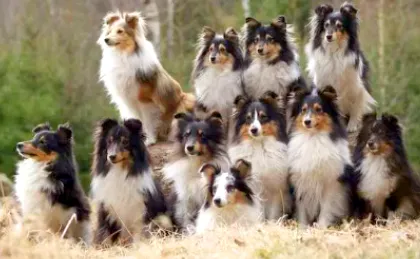
The Shetland Sheepdog FAQ
Common questions about Sheltie temperament, intelligence, lifespan, health, grooming, puppies, breeders, adoption, training, and more.
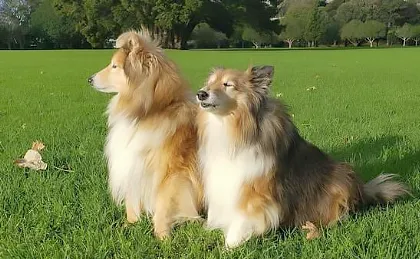
How to Train Your Sheltie
Shelties make dog training easy because they're intelligent and eager dogs. But problems can arise if you miscommunicate with them.

The Sheltie Smile
Do dogs smile? Experts say yes, but it's not for the reason we think. A look at the evolutionary roots of this expression in wolf behavior.
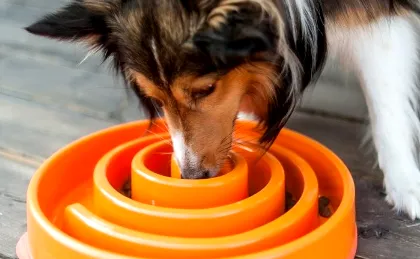
Slow Dog Feed Bowls
If your Sheltie eats too fast, with bloating and hiccups after meals, then he needs a slow feed dog bowl.

